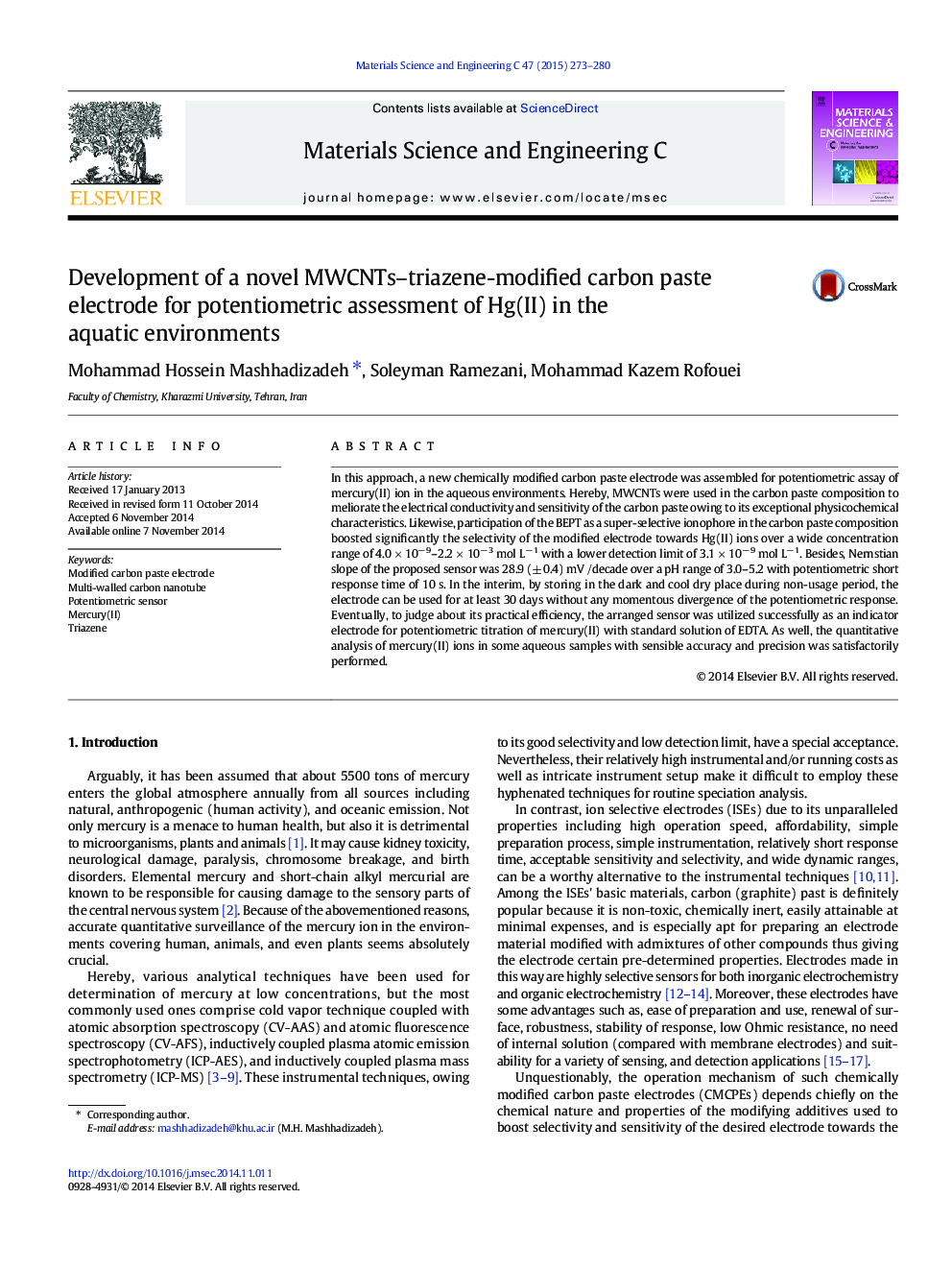| Article ID | Journal | Published Year | Pages | File Type |
|---|---|---|---|---|
| 1428402 | Materials Science and Engineering: C | 2015 | 8 Pages |
•A mercury potentiometric sensor was constructed using MWCNT and a triazene.•This electrode exhibited a wide concentration range with a LOD of 3.1 × 10− 9 mol L− 1.•Compared to previous Hg sensors has superior selectivity over interference ions
In this approach, a new chemically modified carbon paste electrode was assembled for potentiometric assay of mercury(II) ion in the aqueous environments. Hereby, MWCNTs were used in the carbon paste composition to meliorate the electrical conductivity and sensitivity of the carbon paste owing to its exceptional physicochemical characteristics. Likewise, participation of the BEPT as a super-selective ionophore in the carbon paste composition boosted significantly the selectivity of the modified electrode towards Hg(II) ions over a wide concentration range of 4.0 × 10− 9–2.2 × 10− 3 mol L− 1 with a lower detection limit of 3.1 × 10− 9 mol L− 1. Besides, Nernstian slope of the proposed sensor was 28.9 (± 0.4) mV /decade over a pH range of 3.0–5.2 with potentiometric short response time of 10 s. In the interim, by storing in the dark and cool dry place during non-usage period, the electrode can be used for at least 30 days without any momentous divergence of the potentiometric response. Eventually, to judge about its practical efficiency, the arranged sensor was utilized successfully as an indicator electrode for potentiometric titration of mercury(II) with standard solution of EDTA. As well, the quantitative analysis of mercury(II) ions in some aqueous samples with sensible accuracy and precision was satisfactorily performed.
